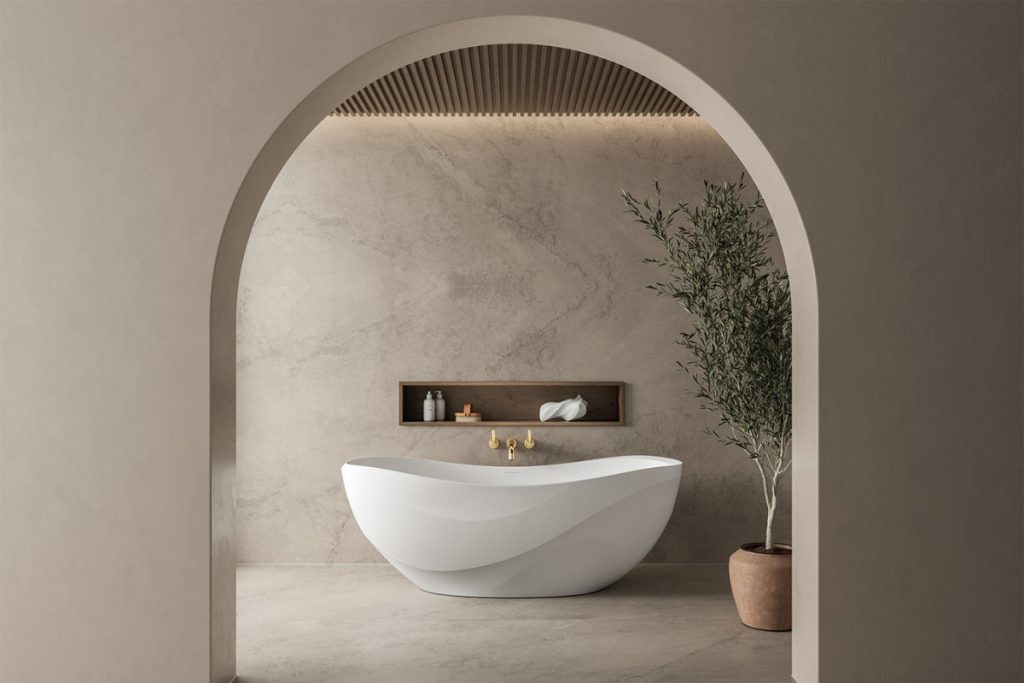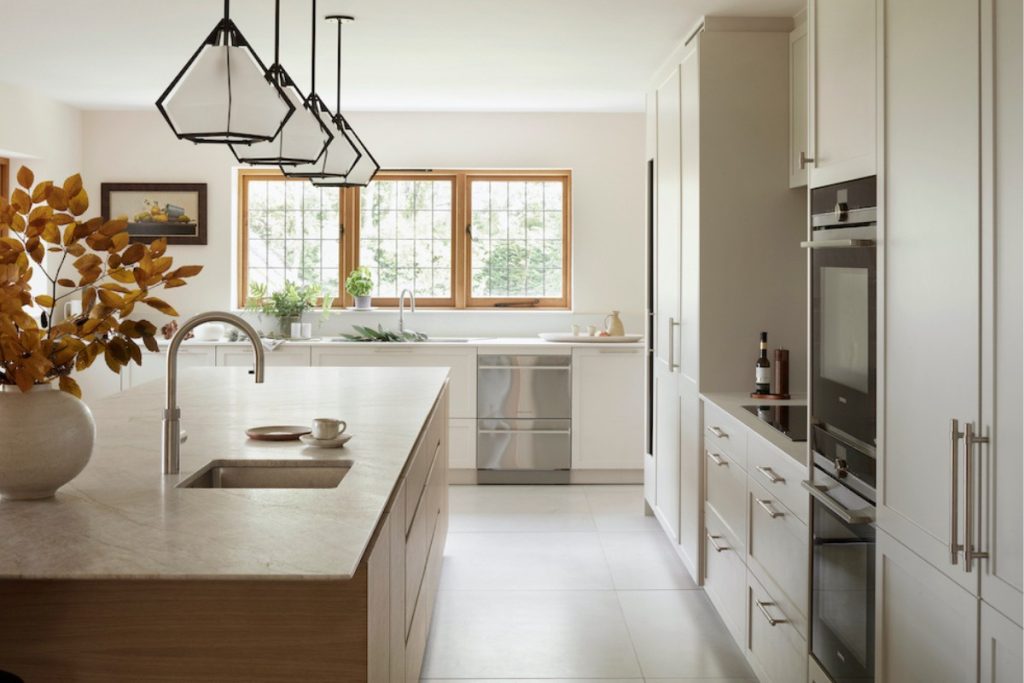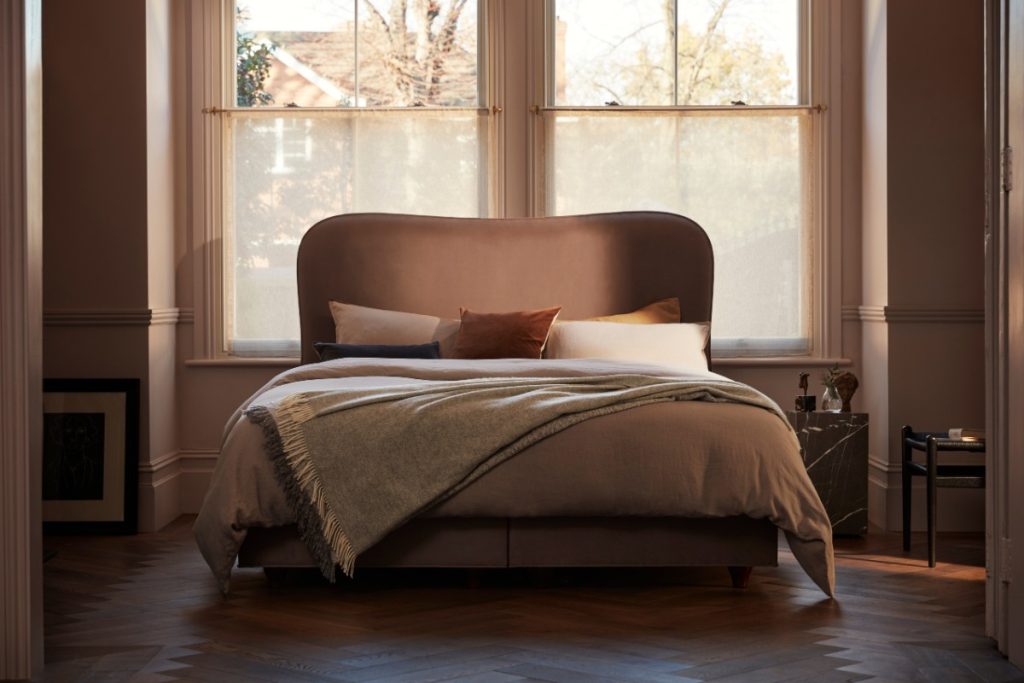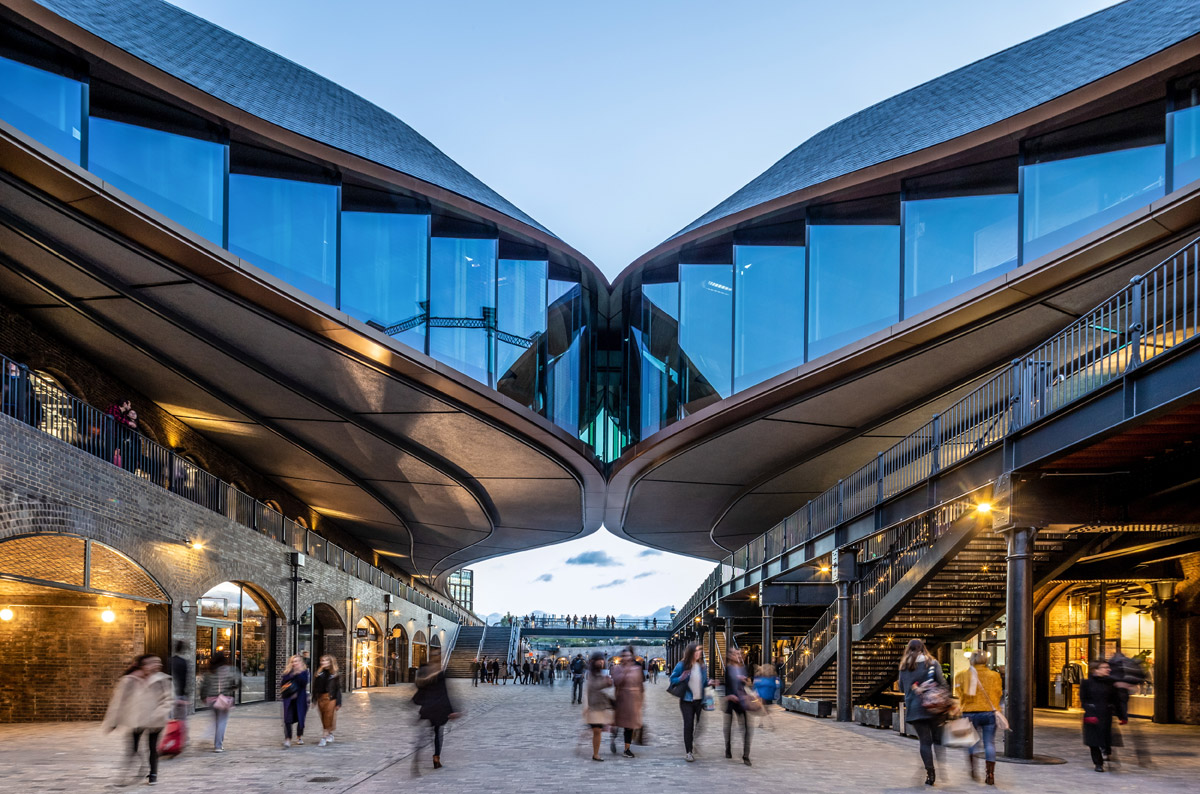 20th August 2021 | IN DESIGN TECHNOLOGY | BY SBID
20th August 2021 | IN DESIGN TECHNOLOGY | BY SBIDBuilding Information Modelling – or BIM – enables you to make your clients’ visions a reality. The model-first process lets you create a virtual prototype of the proposed project, so everyone has complete visibility of a space down to the smallest details. Using BIM collaborative software across the project teams allows information to be shared much more frequently during the design process. This gives all contributors a holistic opportunity to coordinate works packages through an accurate 3D model world and importantly, allows designs teams to catch unforeseen issues before site.
Other industries have been using BIM for years. Architects, engineers and construction firms use the process to better understand every element in a design. Yet, it’s relatively new for the fit-out sector. Portview, however, are working to change this. By taking a model already developed at construction or earlier design stage, and collaboratively developing this through to finishing stages, we are better able to foresee challenges and help the entire fit-out process run smoothly from start to finish. This journey allows clients a more immersive experience to understand different ways they can use their space.
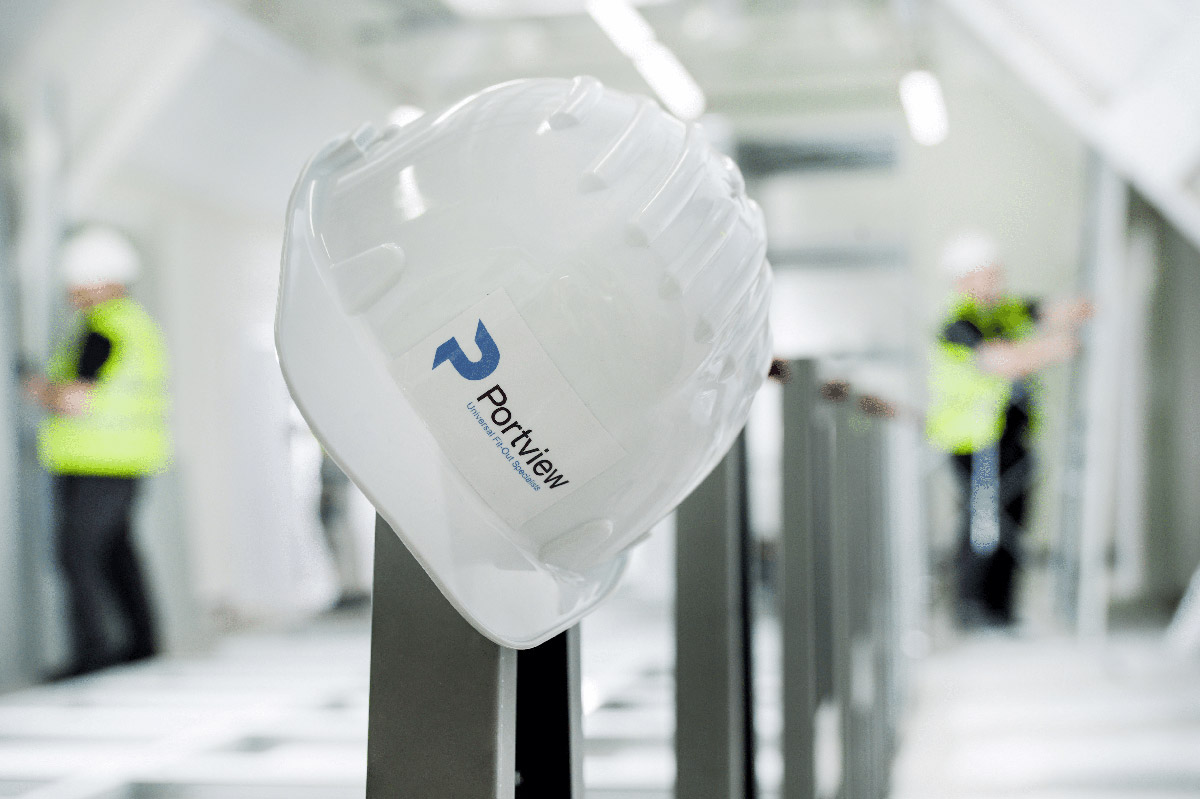
The benefits of BIM
Portview has brought most of their BIM in-house. It allows them to keep everyone involved throughout the design and fit-out process. Meaning, they can answer queries and solve issues quickly and effectively. Using BIM in-house also has the following benefits for them and their clients.
1. Improved collaboration and communication
BIM makes it easier to share designs, collaborate and manage version control compared to paper and/or PDF drawing sets. Using Cloud Technology, different teams can work together, from those in the office to those in the workshop and on-site. Everyone can immediately see changes others have made and work together to coordinate planning.
You can also receive live feedback from our clients, allowing you to accommodate amendments quickly. With BIM, the data is transparent. It removes jargon and uses 3D visualisation, which is much easier for everyone to digest, making it much easier to communicate ideas, concerns and develop solutions.
2. Reduced client risk
With early clash detection at the model stage, it avoids time and money in sorting it out on site.
Greater collaboration means you can improve accuracy and solve challenges early on, well before you reach the site. This accuracy minimises the chance of overall variations, enabling you to reduce tender risk premiums and lower insurance costs.
3. Efficient planning and use
BIM acts as a virtual world. It lets clients visualise the space to make their decisions confidently. For the teams, it provides a complete overview of the project so that they can plan everything down to the millimetre. Armed with this data, they can relay accurate estimates, so the prefabrication stage runs smoothly and on budget. BIM also helps the clients plan how they use the space. A complete set of maintenance instructions can be created for their teams to use throughout the building’s lifecycle.
4. Improved scheduling
With greater emphasis on the collaborative upfront modelling stage, BIM allows you to have more foresight and can schedule tasks while plans evolve. Not only that, but BIM solves the communication stumbling blocks that often cause delays. Everyone has access to the plans and is involved throughout the process, meaning they can deal with issues before reaching the site.
5. Predictability
Having a real-time model allows for a level of predictability that just hasn’t been possible before in the dynamic fit-out sector. BIM creates robust, accurate, transparent and digestible information, and it helps you access data from previous design stages to bring their ideas along with yours. When everyone can see the reality of a design, it’s easier to spot elements that can be refined and detect potential issues before they become a problem. It’s also easier to predict costs and timeframes to meet all stakeholders’ targets.
6. Reducing cost
As a relatively new addition to the world of fit-outs, BIM carries a high perceived cost. But many clients wisely see it as an investment. By frontloading the design process and the costs associated with it, clients can reduce their spend in the long run. This is because you can build robust workflows that work with supply chains to avoid duplication, reworks and the need for more materials. You can also adapt designs much earlier in the fit-out when it is easiest and more cost-effective to do so.
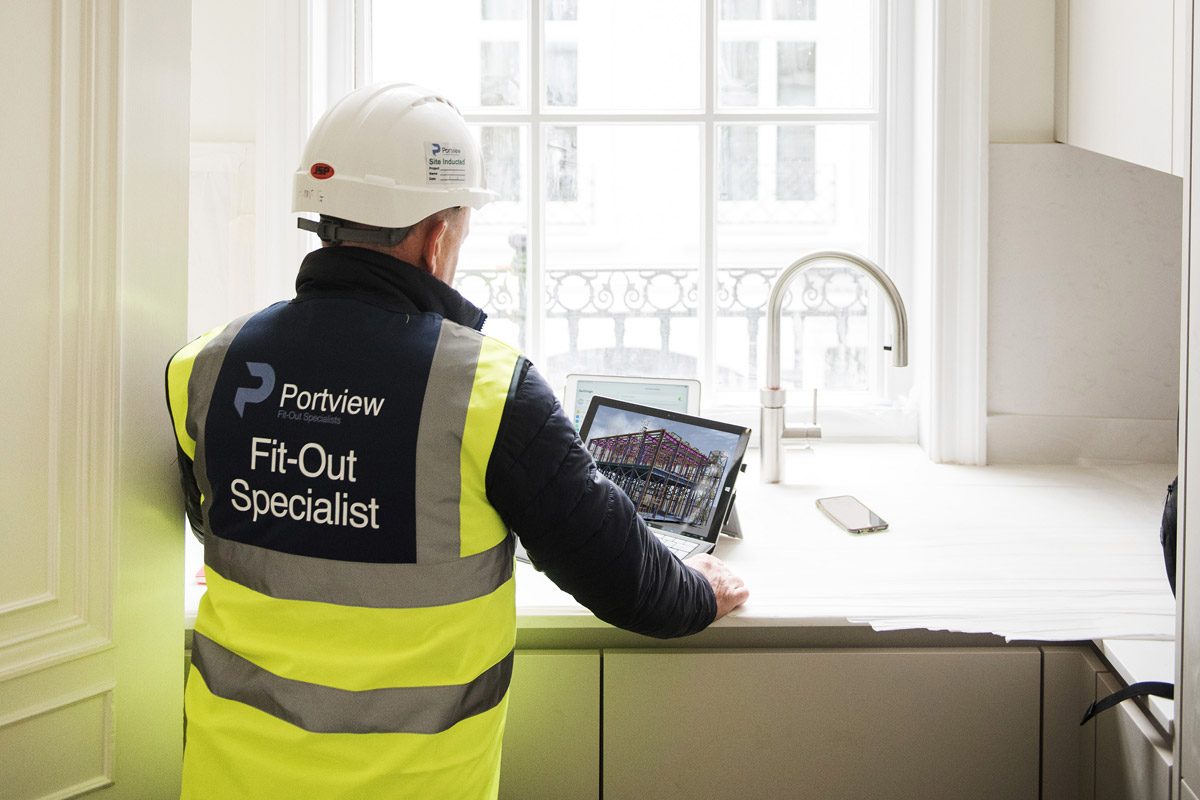
Getting the most out of BIM for your projects
Engage early: one of the main benefits of using BIM is solving problems early in the fit-out process. Portview encourages their clients to have a number of discussions with them in the beginning, so they can extract as much information as possible and take ideas from their minds to make them a reality.
Get the right people in the room: BIM enlightens issues to all, so it’s vital that decision-makers are involved. Portview aims to take clients along the design journey to make sure there are no surprises during delivery.
Have open and honest conversations: With BIM, you can see the substance and the style of a fit-out. Often, it’s not until you see the reality that you know what you really want. Portview’s model-first process creates an early opportunity to play around with ideas and reject those that aren’t working to find the solution that suits everyone.
Stay in communication: BIM aids collaboration, but it’s important that you keep everyone talking, too. It’s best not to presume that someone has seen a change and is working on it, and instead use the oversight that BIM provides to form the foundations of your discussions.
The future of BIM for fit-outs
BIM modelling is becoming more commonplace, even for smaller fit-out projects. As Portview continues to use BIM and develop their workflows, they realise more of its value creating potential, allowing their teams to make more informed decisions.
This is just the beginning for them with BIM. They’ll continue to embed it in their processes to create a single source of project truth, helping them complete projects more collaboratively, sustainably and effectively.
About
Portview is a leading fit-out specialist that has been transforming ambitious design concepts into reality since 1975. They are renowned for delivering exquisite interiors for the world’s top brands in the business, retail, stadia and hospitality sectors. Clients include Samsung, Harvey Nichols, Chanel, Tottenham Hotspur, Issey Miyake, Rosewood London, and Wimbledon.
With teams covering the whole of the UK and Ireland, Portview manages projects of all shapes and sizes, including major refurbishment and roll-out contracts. Services include design development, planning approval, technical surveys, project management, contracting and fit-out. A lasting legacy needs a vision. And Portview’s mission is to bring it to life.
Cover Image Credits: Portview ©
If you’d like to feature your news or stories with SBID, get in touch to find out more.
If you’d like to become SBID Accredited, click here for more information.
